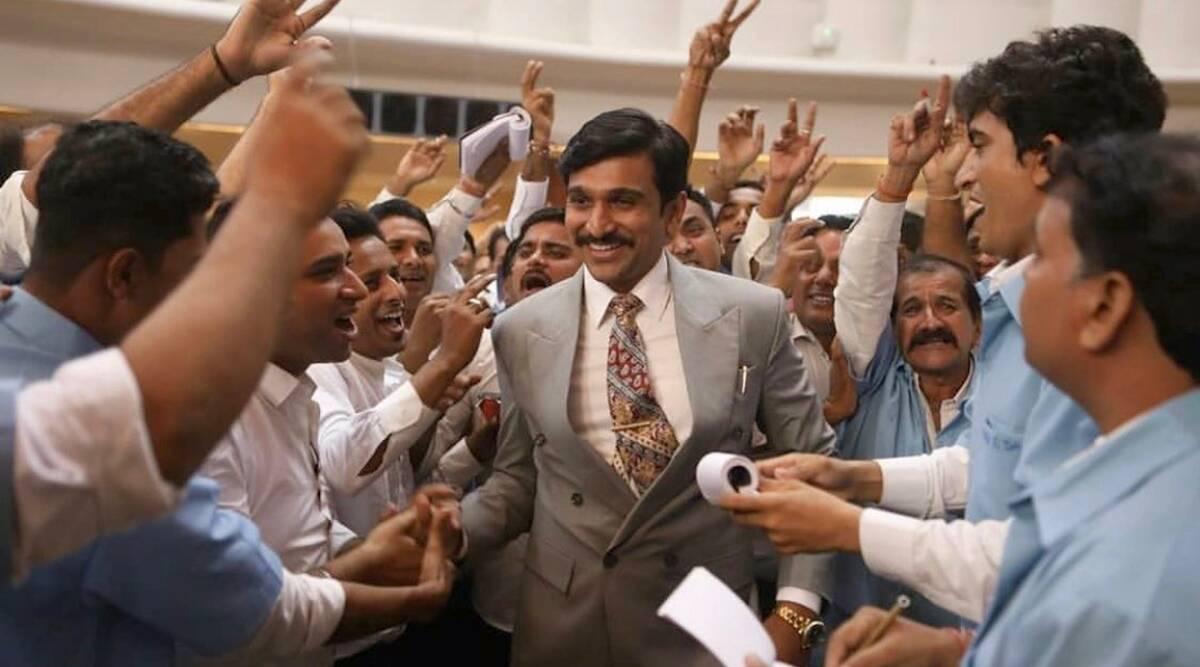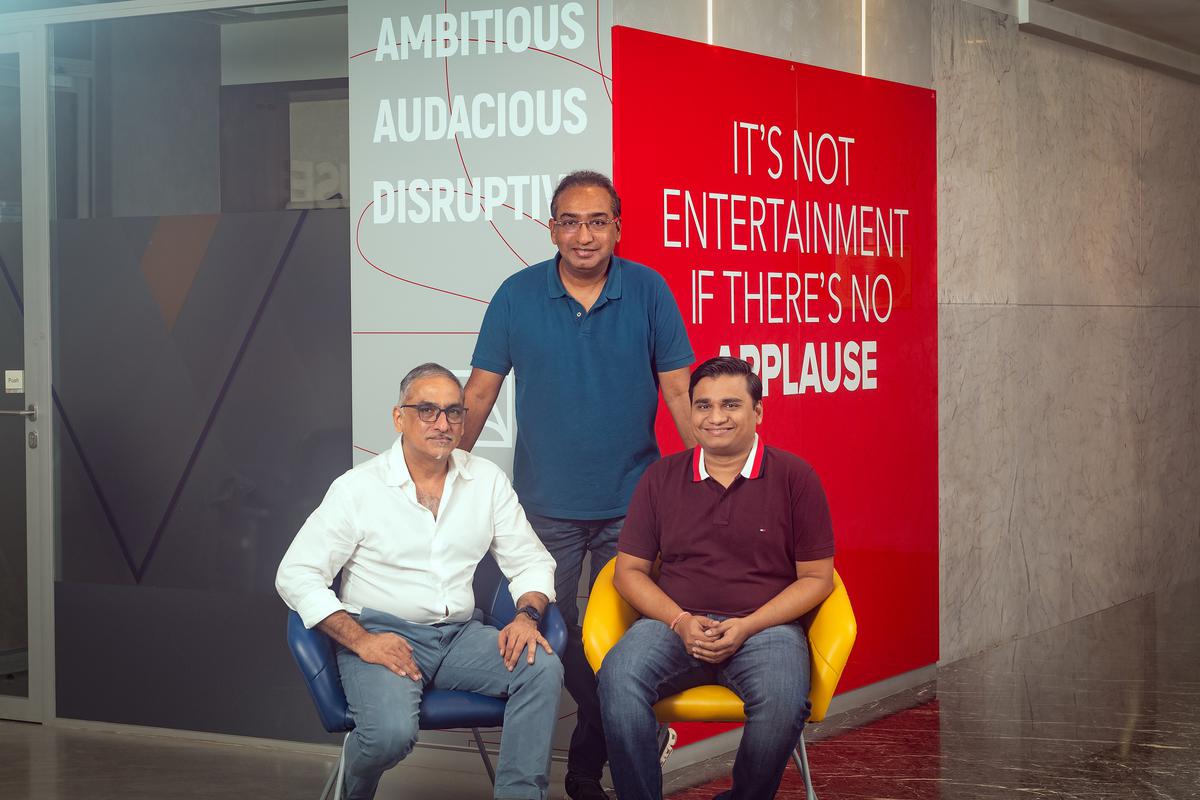The CEO of Applause Entertainment on the content studio’s journey so far, looking ahead to shows like the ‘Gandhi’ biopic and ‘Scam 2003’ and how streaming platforms have changed the game
The CEO of Applause Entertainment on the content studio’s journey so far, looking ahead to shows like the ‘Gandhi’ biopic and ‘Scam 2003’ and how streaming platforms have changed the game
A true-blue veteran of the media industry, Sameer Nair’s media-content house Applause Entertainment, which started as a fledgling studio five years ago is now working with the biggest content creators and actors across the country.
Having produced some of the most successful shows on streaming platforms – such as Scam 1992, Criminal Justice and Rudra: The Edge of Darkness – Sameer, CEO of Applause, looks to embark on a new chapter as the brand venture into making more feature films, documentaries and shows.
After working at behemoths like Star India, NDTV Imagine and Balaji Telefilm, Sameer, who was the brain behind quiz show Kaun Banega Crorepati (KBC), is anticipating an exciting few years ahead. During this time, he plans to helm projects that involve adapting the Amar Chitra Katha comics, a biopic on Mahatma Gandhi, a series on the assassination of former Prime Minister Rajiv Gandhi, as well as Scam 2003 (the sequel to Scam 1992).
Excerpts from an exclusive interview:
Applause Entertainment turned five recently; has the studio achieved the short-term goals you set when you initially started out?
Yes, we have, by and large, achieved what we set out to do. The streaming platforms were growing parallely with the telecom industry. There was a dearth of premium drama content, as saas-bahu soaps or reality shows, in Hindi or regional languages, dominated television screens. We realised, there was a world that existed between Naagin and Narcos, and people wanted something new. So one risk-related strategy of ours was to get in there, create the content, invest the money, and then show it on digital platforms.
The punt paid off. It’s echoed best in our own show Scam 1992 as they say, ‘ risk se ishq!’ We had a good time, managed to build a wonderful team of people here at Applause, worked with fantastic creative partners, directors, producers and writers. We also worked with all the platform partners, and there is so much to learn from them on what works and what doesn’t. They also help us in making content decisions. Our conversations with Disney+ Hotstar, SonyLIV, Amazon Prime Video, MX Player and Netflix, all of them, give us a lot of insight and inputs into how they are thinking and the strategies they are employing. They are the ones with all the data!
These days, after making a project, how does a content-media studio decide between a theatrical and streaming platform release?
I don’t think it’s fair to compare theaters to OTT because they are two entirely different mediums. The theatrical experience of a film releasing during a big weekend, becoming a massive hit, then the word-of-mouth that follows… it creates almost a sort of a cultural moment. For example, when a Rajinikanth film releases, there really is pandemonium.
Now, that can never be recreated with streaming platforms. It is a long-tail business, where you put a movie on OTT and it’s always there, and the audience can see it whenever. But that may not be cost-effective for businesse. So when you’re spending money on content and releasing it on a particular Friday, you need to get a certain mass of viewership on the first weekend, and in the first 10 days.

A still from ‘Scam 1992’
On OTTs, marketing and content need to reach out to customers and get new subscribers in a combined effort. Subscriber-led platforms don’t need to reveal the numbers because they are not supported by ads. But of course, they have those metrics of the existing base to identify how many people watched something, did they complete seeing it, is there a good social chatter around it, and if there is positive critical acclaim.
W hat are the different metrics a studio such as yours looks for before green-lighting a project?
We go for a three-pronged approach. In order to get some speed to market, we do international show adaptations, acquire some books and do book adaptations, and then pursue original material that comes to us.
That’s why we did shows like Criminal Justice and the Indian version of The Office. We adapted shows like Scam 1992 and Avrodh: The Siege Within from books, and then did originals like Iru Dhuravam, Madhuri Talkies, Hasmukh, and so on. We are also doing subsequent seasons for shows that have succeeded; like in the case of Scam. .
We also look at the market and what everyone else is doing.More than the story, it’s the storytelling that is important; it is a process that travels from the first time we hear the idea, to when you see it on screen in about 18 months.

A still from the Indian version of ‘The Office’
I’m a big believer in formula as well; Indian television has been built on it, right? So it’s all about choosing the right idea, and then putting this package together.
What is your take on the raging pan-Indian debate today, and do you feel that it’s a sustainable phenomenon?
Pan-India is a bit of a manufacturer term. Whenever you create content, you’re creating it for your immediate, local market.
The show Money Heist was created initially for the Spanish market only; did they set out to make a global hit? Same with a Narcos or Squid Game. It’s always made to start with some domestic idea and thought, and be truly authentic, to be truly rooted. That’s important.
Now, we talk about this whole new pan-India phenomenon. Instead, we should be trying to reach a global audience. Isn’t it conceivable that you can make a Tamil show, which can be watched by the whole world?
The reality is that India has been watching dubbed regional language movies for a long time. I still remember my STAR days, when we used to keep playing this Chiranjeevi film, called Indra The Tiger, whenever ratings dropped, to get an immediate bump!
It all started with the Baahubali movies. I suppose another contrarian way to look at the pan-Indian phenomenon is to say that North India is watching South Indian dubbed movies dubbed in Hindi at this scale. Is South India watching North Indian movies at this scale? Maybe. And if not, then maybe there’s something to think about.
Streamers have flattened the world and allow you a global audience, it’s not just a pan-Indian audience. Just as we are consuming content from across the world, the world could consume content from us.
On seeking out ideas and inspiration:
I’m a voracious reader, I consume a lot of content, and I’m also always looking for recommendations from people. I don’t think we should let our own personal prejudice or agenda come in the way of good storytelling. If you are making a really dumb comedy, then you must make a really dumb comedy. You can’t suddenly let an intellectual slant come into it! We are in the business of make-believe, and asking people to suspend their disbelief.
What is your forecast for the streaming world in India over the next decade or so?
The honeymoon period for streaming business in India is over. There was a lot of excitement and money spent in the first five years, but now everyone has got a better idea of how things work. People are way more cost-conscious and rightfully so. There’s a lot more planning and discipline now. The OTTs have to figure out their own strategies, just like how TV is always competing for its share of time and attention.

The team of Applause: Sameer Nair – Chief Executive Officer, Deepak Segal – Chief Creative Officer, and Prasoon Garg – Chief Business Officer
| Photo Credit: RAJEEV MADHUSUDAN GAIKWAD
The next five to 10 years are going to be an interesting period as the market will grow and 5G is going to change the game. The number of content-consumers can go upto 300 to 500 million, and it’ll be a big opportunity for creators. But it will also come with a lot of discipline.
Which upcoming projects are you most excited about?
I’ve been pursuing Amar Chitra Katha for the past 15 years, and I’m happy to say that we have finalised the deal, and soon will be producing them at an international standard for a global audience. So it’s not about making another version of the Mahabharata or Ramayana for Indians; we have already seen those epics many times. But this is like we consume Greek mythology; I want the world to discover Indian mythology!
The other ambitious goal is making the biopic on Gandhi, and I’m thrilled that we were able to acquire the rights to Ramachandra Guha’s books, and bring on the likes of Hansal Mehta, Siddhartha Basu and Pratik Gandhi. I’ve always seen the Gandhi saga as both the story of a person and then the stories of so many other people around him. The Indian Independence struggle had so facets to it, and this is modern India being born.
Will we see Applause venture more into the regional-language market?
We have already set up an office in Chennai, and are so excited to expand our plans there. We have done shows in Tamil and Kannada already, but have bigger, more ambitious ideas for South Indian projects. We are doing significant work with creators from Tamil, Telugu and Malayalam to not only do local regional-language shows, but to also work on Hindi projects for us.
Stay connected with us on social media platform for instant update click here to join our Twitter, & Facebook
We are now on Telegram. Click here to join our channel (@TechiUpdate) and stay updated with the latest Technology headlines.
For all the latest Entertainment News Click Here
For the latest news and updates, follow us on Google News.
